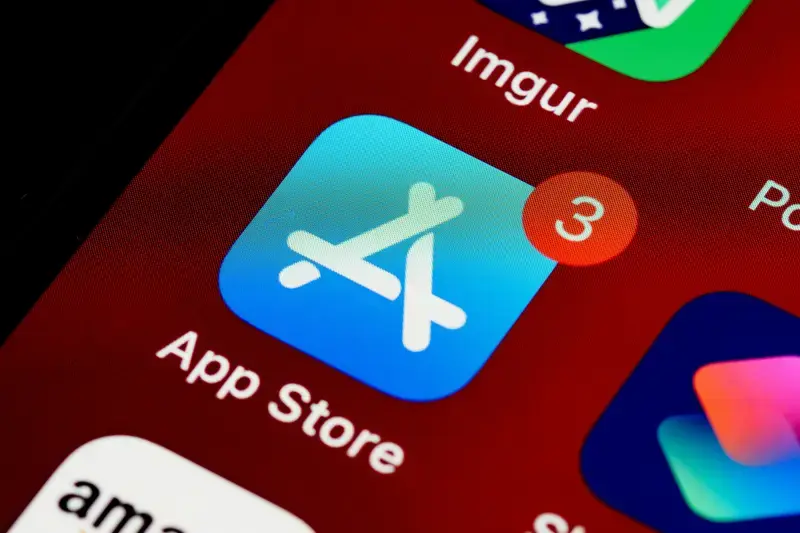How Do I Market My Mobile App?
Launching your mobile app is just the beginning of an exciting journey. After pouring countless hours into development, you might be wondering: "How do I get my app into the hands of people who'll love it?" It's a question we've helped hundreds of app creators answer over the past eight years.
The difference between a successful app and an overlooked gem often isn't the quality of the product - it's how effectively you tell its story to the world
Think of marketing your app like introducing a new friend to your social circle. You wouldn't just throw them into a room full of strangers without any context, would you? Similarly, your app needs a proper introduction to stand out in a marketplace with over 5 million other apps.
What You'll Learn in This Guide
We've designed this guide to walk you through every crucial aspect of app marketing, from understanding your audience to measuring your success. Whether you're working with a shoestring budget (like many of the indie developers we've helped) or have substantial resources at your disposal, you'll find practical, actionable strategies that work in today's mobile landscape.
Remember when Angry Birds first launched? It wasn't an overnight success - it took clever marketing, understanding player psychology, and consistent refinement to become a global phenomenon. While we can't promise you'll create the next Angry Birds, we can equip you with the knowledge and strategies to give your app the best possible chance of success.
Let's begin this journey together, exploring each marketing avenue that could help your app find its perfect audience.
Understanding Your Target Audience
Before you dive into marketing tactics, let's talk about the most crucial step that many app creators overlook: truly understanding who you're building for. Think about it like preparing a special meal - you wouldn't start cooking without knowing who's coming to dinner, would you?
Who Are Your Users, Really?
Having worked with hundreds of app projects over the years, we've noticed that the most successful apps share one thing in common: their creators know their users inside and out. It's not just about age and location (though these matter); it's about understanding their daily routines, challenges, and what makes them tick.
Start by creating detailed user personas. If your app helps people manage their houseplants (yes, we've built one of those!), you might be targeting busy young professionals who want to keep their urban jungle thriving but often forget to water their leafy friends. Understanding these specific needs helps shape everything from your marketing message to which channels you'll use to reach them.
Getting to Know Your Audience
Here's a practical way to start: speak with at least 10 potential users. Have proper conversations, not just quick chats. Ask about their daily challenges, how they currently solve the problem your app addresses, and what would make their lives easier. You might be surprised - we once found that what we thought was our target audience's biggest pain point wasn't actually their main concern at all!
Remember, your target audience isn't just data on a spreadsheet - they're real people with real needs. Understanding them deeply will make every marketing decision that follows much more effective.
Building a Strong App Store Presence
Getting your app store presence right is like dressing up for a first date - you want to make a stellar first impression. With millions of apps competing for attention on the App Store and Google Play, your app's storefront needs to shine.
The Art of App Store Optimisation (ASO)
Think of ASO as the equivalent of SEO for app stores. Just as you'd optimise a website for Google, your app needs to be optimised for app store search algorithms. We've seen countless brilliant apps struggle simply because they couldn't be found easily in searches.
Your app store presence consists of several crucial elements that work together like instruments in an orchestra. Each component needs to be perfectly tuned to create a harmonious presentation that converts browsers into users.
- App name and subtitle that clearly communicate your value
- Keywords that match what your target users are searching for
- Eye-catching icon that stands out in search results
- Screenshots that tell a visual story
- App preview video that demonstrates key features
- Compelling description that addresses user needs
The Power of Social Proof
Ratings and reviews are like digital word-of-mouth. They can make or break your app's success. Consider this: 79% of users check ratings before downloading an app, and most won't even consider anything below 4 stars.
Always respond to user reviews - both positive and negative. It shows you're actively engaged with your community and care about user feedback. Plus, app stores algorithms favour apps with developer responses!
Making Social Media Work for Your App
Social media can feel like a maze when you're trying to promote your mobile app. We've seen countless developers post endlessly about their apps without getting meaningful engagement. The good news? There's a better way to approach social platforms, and we'll show you how to make them work effectively for your app.
Building Your Social Media Foundation
Think of social media as a conversation at a party rather than a billboard. Your goal isn't to shout about your app; it's to engage with potential users in meaningful ways. We've found that successful app marketing on social platforms starts with choosing the right channels where your target audience actually spends their time. For instance, if you've developed a photography app, Instagram and Pinterest might be your sweet spots, while a business productivity app might find more traction on LinkedIn.
Creating Content That Resonates
The secret sauce to social media success lies in providing value before asking for anything in return. Rather than just posting about features, share content that solves problems or entertains your audience.
- Share behind-the-scenes glimpses of app development
- Post user success stories and testimonials
- Create quick tips and tutorials related to your app's purpose
- Engage with user comments and questions promptly
- Use platform-specific features (Stories, Reels, Live sessions)
- Share relevant industry news and insights
Remember, consistency trumps frequency. It's better to maintain a steady presence with quality content than to overwhelm your followers with constant posts. Think of it as tending to a garden - regular, thoughtful care yields the best results.
Creating Buzz with Content Marketing
Content marketing might feel like a bit of a puzzle when you're launching a new app. After all, your fantastic creation is ready to go, but how do you tell the world about it in a way that genuinely interests people? It's rather like being at a party - nobody wants to talk to the person who only speaks about themselves!
The most effective content marketing doesn't push an app onto users - it pulls them in by solving their problems and answering their questions
Building Your Content Foundation
Start by thinking about the problems your app solves. If you've created a meditation app, for instance, your content shouldn't just be about your app's features - it should explore topics like stress management, sleep quality, and mindfulness techniques. This approach helps establish your expertise whilst genuinely helping your potential users.
Choosing Your Content Mix
Think of content like a balanced diet - you need variety to keep things interesting. Blog posts, how-to guides, and infographics can form your base content. Then, spice things up with behind-the-scenes videos, user success stories, or even a podcast discussing industry trends. Remember when Spotify created those brilliant 'Wrapped' stories? That's content marketing gold - entertaining, shareable, and relevant.
The key is consistency and quality rather than quantity. It's better to publish one thoughtful blog post per week than five rushed pieces that don't provide value. And don't forget to optimise your content for search engines - this isn't about stuffing keywords everywhere, but rather about making your helpful content easily discoverable by the people who need it most.
Getting Your PR and Media Strategy Right
Let's be honest - getting the media to notice your app amongst millions of others can feel like trying to be heard at a packed football stadium. We've helped countless app creators navigate these choppy PR waters, and we know it can be overwhelming. But don't worry - with the right approach, even small apps can make big waves in the media.
Building Your PR Foundation
Before you start reaching out to journalists and media outlets, you'll need a compelling story. Think about what makes your app unique - perhaps it solves a common problem in a novel way, or maybe there's an interesting story behind why you created it. Remember, journalists aren't interested in promoting your app; they're interested in telling interesting stories to their readers.
Creating Your Media Kit
A well-crafted media kit is like your app's CV - it needs to make a brilliant first impression. We've found that the most successful app launches always have these essential elements ready to go.
- Press release with a clear, newsworthy angle
- High-resolution screenshots and app icons
- Brief company background and founder bios
- Key features and benefits explained simply
- Recent statistics or research relevant to your app
- Contact information for immediate media inquiries
When reaching out to media, personalisation is key. Just as you'd cringe at receiving a mass-marketing email, journalists can spot a generic pitch from a mile away. Take time to understand what each journalist typically covers, and tailor your approach accordingly. Remember, building media relationships is like tending to a garden - it requires patience, care, and consistent attention to flourish.
Working with App Influencers
Let's face it - getting your app noticed in today's crowded marketplace feels a bit like trying to be heard at a packed concert. That's where influencer marketing comes in, and it's not just about working with celebrities who have millions of followers.
Finding the Right Influencers
Think of influencer marketing like matchmaking for your app. You want partners who genuinely connect with your target audience and share your app's values. A gaming app might benefit more from a respected Twitch streamer than a mainstream celebrity, while a fitness app could thrive with wellness micro-influencers who have highly engaged followers.
We've seen fantastic results when our clients focus on authenticity over follower count. Remember when that meditation app partnered with a handful of mindfulness coaches with just 10,000 followers each? They saw better engagement than their competitor's campaign with a single celebrity influencer.
Building Meaningful Partnerships
The key to successful influencer partnerships lies in creating genuine relationships. Give your influencers creative freedom - they know their audience best. Provide them with unique features or exclusive access to make their content more valuable to their followers.
Before approaching influencers, create a simple one-page brief about your app that includes your values, target audience, and what makes your app special. This helps influencers understand if there's a genuine fit.
- Research influencers' past collaborations
- Start with micro-influencers in your niche
- Focus on engagement rates over follower count
- Track performance using unique promo codes
- Build long-term relationships rather than one-off posts
Mastering Paid Advertising for Apps
When it comes to paid advertising for your mobile app, it's a bit like learning to drive - intimidating at first, but manageable once you understand the basics. We've seen countless app creators feel overwhelmed by the numerous advertising options available, and that's perfectly normal.
Understanding Your Paid Options
After working with hundreds of apps over the years, we've found that a well-rounded paid advertising strategy typically includes several key channels. Think of it as your advertising toolkit, where each tool serves a specific purpose.
- Apple Search Ads - Perfect for iOS apps, targeting users actively searching the App Store
- Google App Campaigns - Excellent for reaching Android users across Google's network
- Facebook and Instagram Ads - Brilliant for visual storytelling and demographic targeting
- TikTok Ads - Ideal for reaching younger audiences with engaging video content
- In-app Advertising - Great for targeting users whilst they're using similar apps
Budget Management Tips
Remember when your mum told you not to spend all your pocket money in one go? The same principle applies here. Start small, perhaps £500-£1000, and test different channels to see what works best for your app. We've found that most successful apps allocate about 30% of their marketing budget to paid advertising.
One often-overlooked tip is to focus on your creative assets. Even a modest budget can deliver impressive results when paired with compelling visuals and clear messaging. Just like that catchy song you can't get out of your head, great creative content makes your ads memorable and effective.
Measuring and Improving Your Results
Let's be honest - launching your app marketing campaign feels a bit like sending your child off to their first day at school. You're excited, nervous, and desperately want to know how they're getting on! The good news is, unlike anxiously waiting at the school gates, you can actually track your app's performance in real-time.
Data without insight is just numbers on a screen. True measurement comes from understanding what those numbers mean for your app's growth story.
Essential Metrics to Track
Think of your app metrics as your mobile application's report card. The key measurements we've found most valuable for our clients include download rates, user retention, daily and monthly active users (DAU/MAU), and cost per acquisition (CPA). But don't get overwhelmed! Start with the basics and build up your measurement strategy gradually.
Making Sense of the Numbers
We know that staring at analytics dashboards can feel like trying to decode ancient hieroglyphics. That's why it's crucial to establish your baseline metrics first. Remember when Spotify first launched? They didn't focus on all possible metrics - they zeroed in on user engagement and retention, which helped them become the streaming giant they are today.
The secret sauce lies in not just collecting data, but using it to make informed decisions. Notice your users dropping off after day three? Perhaps your onboarding needs a tweak. Getting loads of downloads but poor retention? Maybe it's time to reassess your user experience. The beauty of mobile app marketing is that you can adjust and improve as you go along, using real data to guide your decisions.
Growing Through User Feedback
Getting feedback from your app users might feel a bit like opening your Christmas presents - exciting but nerve-wracking at the same time. After all, you've poured your heart and soul into creating your app, and hearing what others think can be daunting. But here's the thing: user feedback is absolutely golden for growing your app's success.
Setting Up Feedback Channels
Think of feedback channels as having your ear to the ground. You'll want to set up multiple ways for users to share their thoughts, just like having several nets to catch fish. In-app feedback forms, user surveys, and even a simple 'contact us' button can work wonders. Remember to keep it simple - nobody wants to fill out a form that feels like a tax return!
Acting on User Insights
Getting feedback is one thing, but knowing what to do with it is another kettle of fish entirely. We've found that creating a simple system to categorise feedback helps tremendously. Sort comments into 'quick fixes', 'future features', and 'big changes' - rather like sorting your laundry before washing. The key is to show users you're listening by implementing changes and communicating updates.
A brilliant example we witnessed was when a meditation app started sending weekly 'You Asked, We Built' updates to users. Their engagement skyrocketed because users felt heard and valued. Remember, your users are essentially your partners in developing a better app - they're using it daily and know exactly what could make their experience even better.
The secret sauce? Be genuine in your responses and transparent about what you can and can't implement. Users appreciate honesty more than empty promises, and this authenticity will help build a loyal community around your app.
Conclusion
Marketing your mobile app might feel like climbing Mount Everest at first - daunting, complex, and perhaps a bit overwhelming. But just as every great journey begins with a single step, successful app marketing is about taking consistent, well-planned actions that build upon each other.
Throughout this guide, we've explored the essential elements of app marketing, from truly understanding your audience to mastering the intricacies of app store optimisation. We've delved into the power of social media, content marketing, and working with influencers. Like building a house, each of these elements serves as a crucial brick in your app's marketing foundation.
Remember, Rome wasn't built in a day, and neither will your app's success be. It's perfectly normal to feel a bit lost initially - we've seen countless developers in your shoes over our eight years in the industry. The key is to start with the basics, test different approaches, and continuously learn from your results and user feedback.
Whether you're launching your first app or your fifteenth, the mobile app marketplace is constantly evolving, much like the British weather - always changing and keeping us on our toes! Stay flexible, keep learning, and don't be afraid to adjust your strategy based on what the data tells you.
Most importantly, remember that your app's success isn't just about downloads - it's about creating real value for your users and building lasting relationships with them. Keep your users at the heart of everything you do, and you'll be well on your way to creating not just an app, but a digital experience that truly resonates with your audience.
Share this
Subscribe To Our Learning Centre
You May Also Like
These Related Guides

How Do I Develop a Successful Marketing Strategy for My Mobile App?

How Do I Optimise My App for the Apple App Store?



